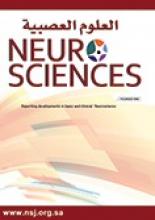Abstract
Trochlear nerve palsy is rarely encountered in children and only 5% are truly isolated. Multiple sclerosis (MS) is also extremely uncommon in children. This report describes an otherwise healthy 10-year-old boy who presented with a 5-day history of vertical diplopia with associated dizziness, decreased appetite, and unsteadiness. He had no recent history of infection and no previous history of neurological symptoms. Ophthalmologic assessment revealed full ocular ductions and right hyperdeviation in primary gaze during alternate cover test. This hyperdeviation increased during left gaze, and right head tilt consistent with paresis of the right oblique muscle. Brain MRI revealed multiple well-defined hyperintense T2 lesions in the periventricular and subcortical white matter, and brainstem, suggestive of MS. His symptoms resolved after 2 weeks with no treatment. To conclude, isolated trochlear nerve palsy can be the initial clinical manifestation of childhood MS. Long term follow up is needed to confirm the diagnosis of MS.
- Copyright: © Neurosciences
Neurosciences is an Open Access journal and articles published are distributed under the terms of the Creative Commons Attribution-NonCommercial License (CC BY-NC). Readers may copy, distribute, and display the work for non-commercial purposes with the proper citation of the original work.






